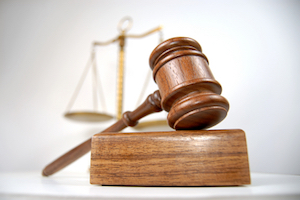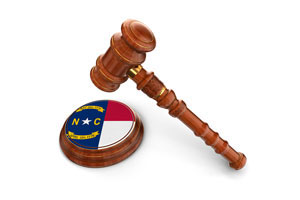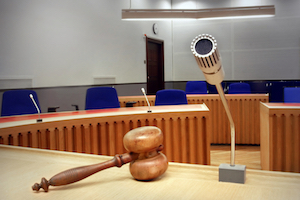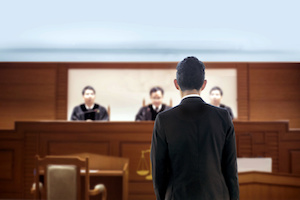Medical experts often provide evidence that helps injury victims prove their damages. In some litigation, including medical malpractice cases, medical evidence is also needed to prove liability.
Is medical evidence needed to prove a claim under the Americans with Disabilities Act? A decision of the Court of Appeals for the Tenth Circuit explains that the answer depends on the nature of the plaintiff’s alleged disability.
Facts of the Case
Empire Marketing Strategies (EMS) employed Jonella Tesone as a product merchandiser. Her job duties included changing product displays in grocery stores. When it hired Tesone, EMS was aware that she could not lift more than 15 pounds.
EMS gave Tesone a performance review after she stayed an additional night in Colorado to complete a time-consuming project. Tesone did not obtain permission to stay an extra night at the hotel. During the review, Tesone explained that she needed extra time to finish the project because of her lifting limitation.
For the first time, EMS requested documentation of the limitation. Four months later, after repeated requests, Tesone supplied a doctor’s recommendation that her chronic back pain be accommodated by limiting her job duties so that she would not be required to lift more than 15 pounds or to lift anything above her head.
Tesone presented evidence that EMS suddenly began to make subjective complaints about her job performance. It then terminated Tesone’s employment for “consistent violations of company policies.”
Complaints about job performance that only arise after the employee asks the employer to follow the law are inherently suspicious. Tesone argued that the performance concerns were invented as pretexts to mask her employer’s desire to fire her rather than to accommodate her lifting restriction.
The ADA Accommodation Requirement
Under the Americans with Disabilities Act (ADA), employers must provide reasonable accommodations that will allow disabled employees to perform their essential job functions if the employer can do so without undue hardship. Federal court decisions consistently undermined the remedial purpose of the 1990 law until Congress revitalized the ADA in 2008. New legislation was enacted that year that eliminated many of judicial interpretations of the ADA that undercut its effectiveness.
The ADA defines a disability as an impairment of body or mind that substantially limits (or that an employer regards as limiting) a major life activity. Under the current version of the ADA, an individual whose major life activities are significantly limited as compared to the general population has a “substantial” limitation.
Major life activities include such ordinary functions of daily living as standing, walking, sleeping, breathing, seeing, hearing, and working. The impairment of a bodily organ or system is also defined as the impairment of a major life activity.
Many federal judges denied discrimination claims advanced by disabled employees prior to 2008 after concluding that the employees failed to prove that they were disabled. Judges often required employees to prove that their disabilities were severe and long-lasting, notwithstanding the absence of any language in the ADA that limited the ADA’s protections to a small subset of disabled employees.
When Congress amended the ADA in 2008, it made clear that proving the existence of a disability should not be an onerous burden. Courts should instead focus on whether an employer met its legal obligation to accommodate a disabled employee who was capable doing the work with an accommodation.
Failure to Designate Expert
The district court entered a scheduling order that set a deadline for disclosing expert witnesses. Tesone failed to meet that deadline. Counsel for EMS told Tesone that she could not prevail without an expert. A Magistrate Judge expressed that same opinion during a settlement conference.
After the settlement conference, Tesone filed a motion to enlarge the time for naming an expert. She also moved to amend her complaint to allege that she was discriminated against because of a perceived disability. Since an employer’s perception that an employee is disabled does not require proof that the employee is actually disabled, no expert testimony would be needed to support that claim.
The district court decided that Tesone waited too long to file her motions. The court concluded that nothing prevented Tesone from complying with the scheduling order’s deadlines for amending the complaint and designating an expert witness. Since Tesone failed to act with reasonable diligence, she could not demonstrate good cause to extend the deadlines.
The district court next concluded that expert testimony is necessary to establish the existence of a disability. Since Tesone could not produce that testimony, the court granted summary judgment in favor of EMS. Tesone appealed.
When Is Expert Testimony Required to Prove an ADA Claim?
The court of appeals agreed with the district court that Tesone failed to show good cause to amend her complaint to allege claims of discrimination on the basis of perceived disability or retaliation. While complaints must generally allege facts rather than legal theories, the case is a reminder to lawyers that they may be out of luck if a complaint fails to put a defendant on notice as to each legal theory the plaintiff might pursue.
The court of appeals disagreed, however, that summary judgment necessarily followed from the failure to name an expert. It should be self-evident that juries do not always need a medical opinion to prove that a plaintiff is disabled. A plaintiff who is confined to a wheelchair, for example, can easily establish the existence of a disability through his or her own testimony.
Expert testimony may nevertheless be helpful in establishing the existence of a disability. The regulations interpreting the ADA make clear that parties are not prohibited from relying on expert evidence to prove their claims or defenses. However, the regulations also state that a comparison of a plaintiff’s ability to perform a major life activity to the general population’s ability to perform the same activity “usually will not require the presentation of scientific, medical, or statistical analysis.”
In some cases, expert evidence may be critical. It is doubtful, for example, that most people are capable of self-diagnosing a psychological disorder. The existence of many physical disorders, on the other hand, produce obvious disabling symptoms.
The symptoms of a disabling health condition may be sufficiently recognizable to make it unnecessary to use an expert to prove that they substantially limit the performance of major life activities. Notably, the ADA does not require an employee to prove the cause of a disability (which may require a medical diagnosis), but only that the disability exists and that it impairs a major life activity.
The ultimate question is whether a health condition would be so outside the realm of a typical juror’s experience that an expert diagnosis is required to prove its existence. The court of appeals cited the example of a rare condition that causes the death of bone tissue because of a deficient blood supply. Since most jurors would not be familiar with that condition, expert evidence is needed to prove that it meets the definition of a disability.
Appellate Court’s Ruling
The court of appeals recognized that some heath conditions can be readily understood on the basis of a lay juror’s own observations and experience. As an example, the court cited a knee injury that impairs an injury victim’s ability to walk normally. The court cited other cases addressing arm, neck, and back injuries. A victim’s own testimony, describing how those injuries limit the victim’s activities, is often sufficient to prove the injuries are disabling. All of those conditions are familiar to lay jurors, many of whom will have experienced (or at least observed) similar impairments, even if the symptoms that the jurors experienced were less severe than the plaintiff’s.
Tesone’s condition — back pain that is exacerbated by lifting — is neither rare nor of a character that can only be understood by a medical professional. Lay jurors are capable of understanding that severe back pain can be disabling. Tesone should therefore have been allowed to prove she is disabled by testifying about the ways in which her back pain limited her major life activities.
Since nothing in the ADA requires expert testimony to prove the existence of a disability, the district court committed legal error by holding that expert testimony is always necessary to establish a plaintiff’s case. The court did not decide whether Tesone’s own testimony was sufficient to prove her disability but remanded the case to the district court to decide that question using the correct legal standard.
Lessons Learned
Back pain might or might not be disabling, depending on its severity. The case will likely turn upon whether Tesone described the limitations she experienced in sufficient detail to permit a jury to conclude that her pain substantially limits the major life activity of lifting.
Her case would have been stronger, and this controversy could have been avoided, if Tesone had submitted admissible expert evidence of her back condition and the lifting restriction that it caused. The case stands as a reminder that even when expert testimony is not necessarily required, experts can help parties make a more convincing case.













